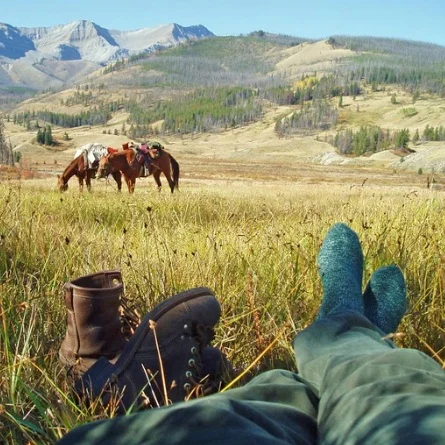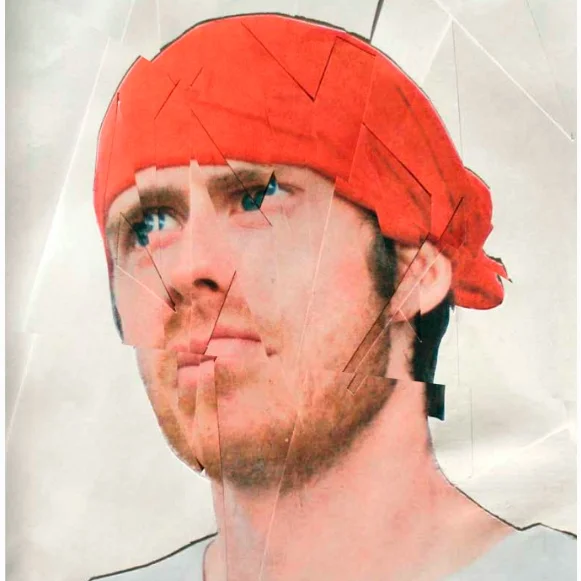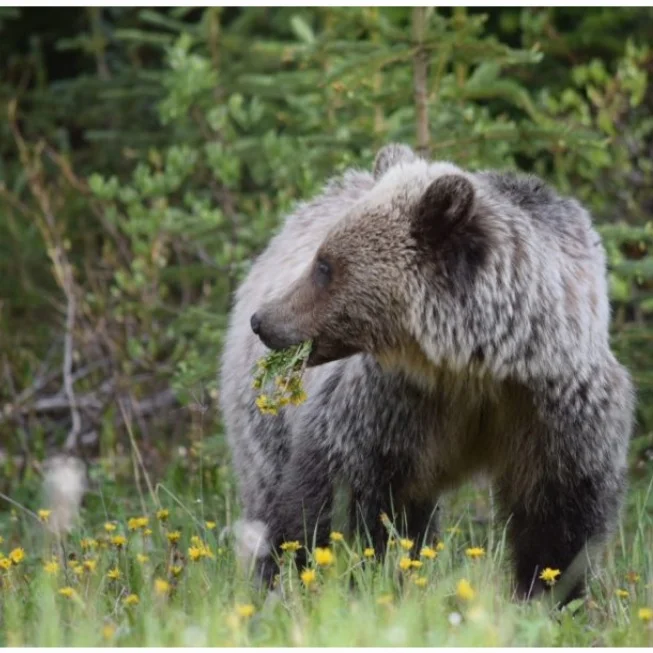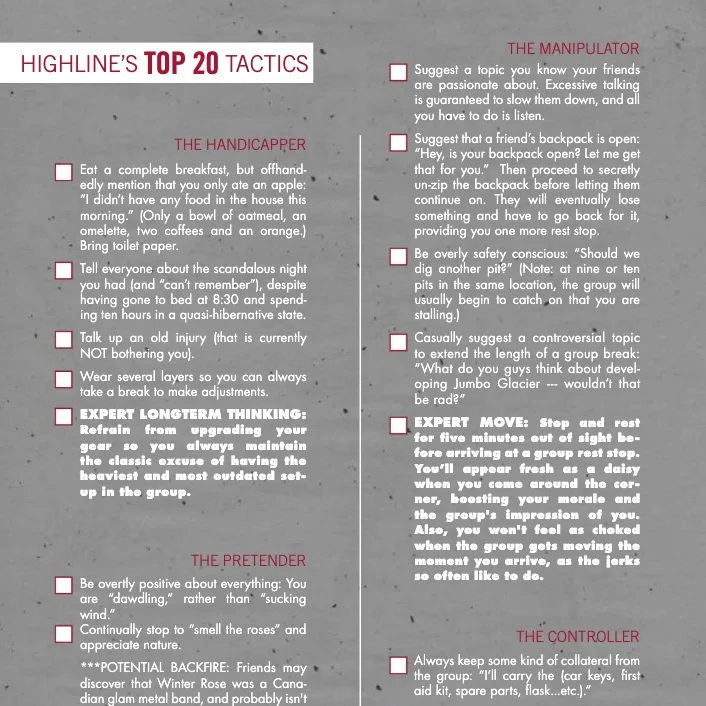Nancy Hansen's Radical Approach
A Canmore resident for two decades, Nancy Hansen’s enthusiasm has been unrivalled since she began climbing in 1995. In 2003, after summiting 3,612-metre Mount Forbes, she became the first woman, and only sixth person to climb all 54 of the Canadian Rockies’ peaks above 3,353 metres (11,000 feet). Adding to a long and impressive check list, with 46 summits completed, she has climbed more of the peaks listed in Roper and Steck’s book, “Fifty Classic Climbs of North America” than anyone else.
Story by Lynn Martel. Photos submitted by Nancy Hansen.
Highline Magazine, Fall 2015 edition.
Hiking the 22-kilometre route from Mount Everest’s north side Rongbuk Glacier base camp to advanced base camp was a dream adventure.
Early along the trail Nancy Hansen and her partner, German alpinist Ralf Dujmovits, reached a partially frozen pond nestled in a corridor fenced by a massive 1,000-metre-high moraine running for two kilometres on the upslope side, with a small, five-metre moraine on the other.
Playfully, she tested the pond’s icy surface. “I stepped on it and it made a sound. Then it moved and sort of made a big wave.”
Attempting to repeat the experience, she jumped hard on the ice. The resulting succession of waves were so powerful she and Dujmovits nearly fell over. Before they had time to wonder how she had caused such a dynamic reaction, massive boulders began bouncing and crashing down the steep side of the massive moraine. Suddenly they were running for their lives, scrambling as fast as they could up the smaller moraine to watch boulders explode on the corridor floor.
“The whole sky was full of dust and rocks,” Hansen says. “Big boulders were coming down right toward us. I was thinking, ‘Holy crap, what did I just do?’ It was too weird, totally bizarre.”
Indeed, the timing of Hansen’s pond jumps was utterly bizarre, coinciding exactly with the two major tremors that rocked the Himalayan nation of Nepal on April 25, 2015, demolishing entire villages and killing more than 9,000 people – including 19 on Everest’s south side – and leaving hundreds of thousands homeless.
THE TRAILHEAD
Growing up on an acreage outside Edmonton, as the youngest of four kids (her closest sibling is six years older), Hansen remedied boredom – which she detested – by making friends with the dogs, horses, cats, chickens, rabbits and cows.
Eager to escape Edmonton after graduation, her plans to tour Greece and Italy fell through after her female travel partner backed out. Hansen was keen to go solo, but her parents nixed that. So she joined some male friends heading to Australia, then ditched them after a week.
She worked on a prawn trawler as a deck hand/cook for multi-month stints totalling a full year.
“I loved it. It was so different from Edmonton, like being on a different planet,” Hansen recalls. “Out on warm open water, we pulled up the most amazing things from the depths of the ocean.”
On land, she rode her Ducati motorbike to weekend music festivals with friends. For fun, they raced on twisty roads; sometimes she won. Six and a half years and a geology degree later, when she was offered a professional position, she turned it down, knowing it would mean staying there. She tried living in Vancouver for a couple of months but hated it. Her sister and brother-in-law living in Canmore invited her to try mountain life.
“I gave up a job as a geologist and went to work at the Sunshine ski school desk for $6.50 an hour,” Hansen laughs. Within a month she met Doug Fulford, Sunshine Village’s assistant controller. Their first date was at the diminutive Banff Community High School climbing wall. With little experience, they begged to join Alpine Club of Canada volunteer-led trips, beginning with Mount Fay above Banff National Park’s Moraine Lake.
“It rained. It hailed. It was a complete whiteout. We got soaking wet, and we froze,” Hansen remembers clearly. “Doug made the world’s worst oatmeal for breakfast, and I nearly threw up from the altitude and runny oatmeal. Following Kelly Adams – she mentored us for years afterward – we ventured into the whiteout towards Mount Fay, but turned back when we were all close to hypothermia. That was the trip where we fell in love with mountain climbing. Seriously.”
“SHE JUST KEPT CLIMBING RIGHT THROUGH THE MIDDLE OF THE STORM. SHE’S SO FOCUSED, SO MUCH INTENSITY. NOTHING DETERS THIS WOMAN.”
A self-professed “list person,” Hansen completed the Canadian Rockies’ 11,000ers – including being knocked unconscious and heli-evacuated from Goodsir South – in only seven years, half the time of any others. While Fulford was always her main climbing partner, Calgary’s Bill Corbett, author of a book on the 11,000ers, was another. While descending notoriously elusive Mount Alberta they were forced to bivy on the summit ridge above 3,353 metres. Hansen snuggled up with an ice block for a pillow.
“It was a long, miserable night, with too much shivering and teeth chattering to get much sleep. Yet Nancy remained quite cheerful throughout,” Corbett says. “She kept the equanimity that allowed us to do the endless rappelling down the rotten face and eventually get down to safer ground.”
Hansen soon embraced the never-done Fifty Classics, poring over maps and doggedly recruiting partners for the cold, snowy alpine routes. Harvie Heights’ Renée Lavergne was one. To acclimatize for the D1 route on Colorado’s 4,344-metre Longs Peak, they climbed a 5.11 route, Vertical Sanctuary. A hiker on a nearby col shouted to them that a storm not visible from their stance was approaching.
“Nancy just started climbing, there was never a discussion,” Lavergne says. “She on-sighted the pitch; it took her an hour. She just kept climbing right through the middle of the storm. She’s so focused, so much intensity. Nothing deters this woman.”
Climbing D1 was less intense, despite ice sheets falling from the face beside them all day, capping what Lavergne called, “a super fun trip.”
“Fun,” however, took on a whole new meaning during their soggy expedition to Alaska’s Kichatna Range to climb Middle Triple Peak’s East Buttress. In 2012, Hansen and partner Holly Beck were dropped off by bush plane and hauled 136 kilograms of food and gear over a steep, glaciated pass only to discover the bottom 40 metres of the route had dropped off the mountain. Hansen returned with Lavergne the following spring only to be confined to their tent for 17 days with no books, no iPod, dwindling food and toilet paper rations, and water seeping into the tent and 4 C temperatures. They wrote songs and mock commercials that they filmed themselves performing, thanks to robust camera batteries.
While Hansen is the first to credit Lavergne for keeping the team spirit up, Lavergne shared the sentiment. “We didn’t dwell on it; we just focused on the task at hand. It would have been easy to pout in the tent all day long, but we just got creative instead. It was a good place to channel our energy. Nancy is a glass three-quarters full kind of person. She sees the possibilities, not the obstacles.”
Chasing possibilities, in 2014 Hansen headed to the Yukon with Wade Suvan and Monte Johnston to attempt two of her remaining Fifty Classics: the only twice-climbed Abruzzi Ridge on Mount Saint Elias; and Mount Logan’s Hummingbird Ridge, climbed once, in 1965. Poor weather and Suvan’s broken ski biding – Hansen refused to continue without him – denied them Saint Elias’ summit. After Johnston left, Hansen and Suvan endured a week of hurricane-force snow storms.
“It was so easy compared to the Kichatnas!” Hansen recalls. “When you set the bar really, really low, everything else seems like a holiday. That’s the secret. Have the worst experience possible, and everything else will feel like a beach holiday.”
From the beginning, everything about the Everest expedition was different. After 17 years of marriage, in 2014 Hansen and Fulford parted. Soon afterward, Dujmovits (the first German and 16th person to climb the world’s fourteen 8,000-metre peaks) whom she’d met at the 2012 Banff Mountain Film Festival, invited her to climb Everest with him. It would be his seventh attempt on Everest without bottled oxygen, and her first. Unlike all her previous climbs, which she organized herself, her new partner in love and adventure had everything planned. A public fundraising effort, another first for Hansen, met great success.
Her first sight of Everest, from the small Tibetan village of Tingri, was unforgettable. “I had always had a secret desire to climb Everest but thought the chances were about the same as going to the moon,” she says. “I felt in awe of it, scared and really, really excited all at once.”
From multiple sightings during their approach, their objective, the only twice-climbed Norton Couloir, appeared to be in good condition. They were stoked.
Then the world shook. Their beach holiday was over; the worst yet to come.
At advanced base camp with no satellite phone (still in transit), information was sparse. Rattled by more earthquakes and aftershocks, after five nights they returned to base camp to be greeted by China Tibet Mountaineering Association officials who drove them for 14 hours to Lhasa. They spent a few days sightseeing, shooting photos and video of Tibetans openly displaying Dalai Lama images.
“Lhasa was clean, beautiful, interesting, extremely peaceful, but always with a policeman over your shoulder,” Hansen recollects. With little information about the earthquake available through Tibet’s “filtered” Internet, they organized flights to Nepal to visit three schools Dujmovits had helped build. They packed to be self-sufficient with a tent, sleeping bags, stove and food. Landing in Kathmandu two weeks after the big quake, Hansen was surprised by the semblance of normalcy.
“We drove to the hotel; everything looked fine,” she says. “We saw very little damage in Kathmandu, just little pockets.”
The chief organizer with the German/Austrian NGO that built the schools, Nepalhilfe Beilngries, arranged for them to travel to a village with a medical team. “That was when we saw the real destruction,” Hansen says. “We passed through about 15 villages, and in every one of them 80 to 85 per cent of the homes and buildings were flattened. It was grim. At the end of the day I felt like somebody had torn my soul out. I was gutted.”
For several days they travelled from village to village where people lived under tarps. While aid groups had handed out bags of rice, toothpaste and soap, nobody had what they needed most – tools to move piles of shattered bricks.
“It was an interesting time to be there, between weeks two and three,” Hansen says. “People were going through a transition, starting to realize their reality. The tourists were gone; the aid workers were leaving. They started to get really desperate about their future. And there was no help. They were left to fend for themselves.”
After Dujmovits flew home to Germany, Hansen was alone for a few days awaiting her flight.
“I got approached constantly,” she says with a sigh. “I can’t help 29 million people. I had a bike, I rode around. I took as many photos as I could. It was hard. People in such despair. I really felt like the best I could do for these people was not to forget about them.”
The lively, vibrant Kathmandu Hansen had instantly liked upon arrival had suddenly ceased to be. “The standard of living had looked pretty good. They seemed to be doing well,” she said. “That was part of what was so crushing. Everything had just been taken away from them.”
The only upside, she says, was that it happened on a Saturday, when most people were outside, and children weren’t in the schools that collapsed.
While she was sitting on her hotel bed, though, the second major earthquake hit. “I was on the third floor, and the whole building was swaying back and forth; my bed was jumping,” she says. “It felt like turbulence in an airplane. I sat there hoping it would stop. People were screaming and crying. Everyone ran outside, out of their homes and businesses. When I left two days later, they still hadn’t gone back inside. Everything was still closed.What did I feel? A mixture of relief and guilt and sadness. Sad that I couldn’t do anything but watch.”
For the first time in her life, Hansen admitted her optimism had been dented. “It definitely challenged me, challenged my positive attitude. I can’t find words to describe how much bigger that situation was than me,” she says. “I felt so helpless. It was, and still is, hard for me to find something positive to say about that situation. I hope they get help from foreigners, and that something can change their government corruption. That’s a big problem.”
“For me, the experience made me more compassionate to suffering. To see the looks on peoples’ faces – I think it made me more humble. Stuff that seemed important isn’t anymore. And I’m not sure I’ve reached a peak with it yet.”
That said, at 46 years old Hansen is moving forward, planning to share her photos in slide shows and organizing future adventures with Dujmovits – possibly Everest, perhaps Hummingbird Ridge, probably one of Nepal’s unclimbed 7,000-metre peaks.
“Ralf and I both enjoy aiming for difficult goals. We thrive on it. We have lots and lots of plans.”
YOU CAN HELP NEPAL BY VISITING NEPAL
Only 10 out of 75 districts and 1 out of 10 national parks is affected.
There is no damage to international airports, highways and subways.
Only 3 out of 8 UNESCO World Heritage Sites have around 40% damages.
Only 2 out of 35 tracking routes are affected.
Hospital and clinics are safe and in operation. No viral diseases.
Communication is perfect.
*Statistics gathered by My Holiday Nepal. Also, if you would like to donate to the relief efforts in Nepal, we recommend putting your dollars to use through doctorswithoutborders.org.










